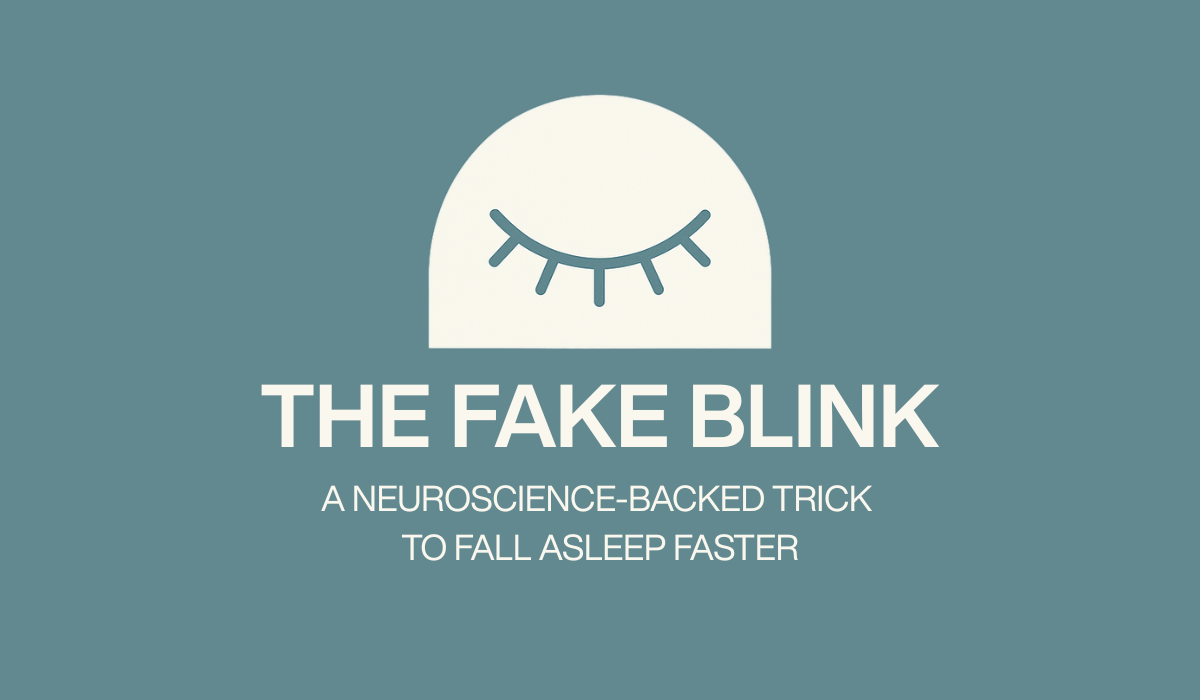The Fake Blink: A Neuroscience-Backed Trick to Fall Asleep Faster
Backed by: Dr. Andrew Huberman, Stanford Neuroscientist
You don’t fall asleep because your brain doesn’t know it’s time.
It’s still scanning, thinking, reacting.
Even in bed, your eyes are active, blinking fast, staring at screens, darting with thoughts.
But the brain follows the body.
When your body slows down, your brain slows down too.
The Fake Blink Trick
This is a simple neurological sleep cue.
Dr. Andrew Huberman’s research shows that slow blinking mimics your brain’s natural pre-sleep behaviour.
It tells your nervous system: “It’s time to power down.”
Why Slow Blinking for Better Sleep Works
Before real sleep begins:
- Blinking rate slows
- Eye muscles relax
- Visual activity drops
By mimicking that sequence through intentional slow blinking, you activate the same sleep pathways on command.
It’s behavioural priming for sleep.
How to Use the Fake Blink Technique
1. Dim Your Environment
Light delays melatonin. Turn down lights 60 minutes before bed.
2. Blink Slowly and Intentionally
Close your eyes gently every 3–5 seconds. Let them close like you’re already drifting off.
3. Stay Still
Sit or lie still. Breathe slowly. Let your nervous system quiet down.
4. No Screens Allowed
Screen light overrides your sleep cues. Shut them off during this process.
Real Use, Real Results with The Fake Blink Technique
High performers use this trick to fall asleep after intense days.
It’s also great for managing insomnia, anxiety, or late-night overthinking.
It’s easy to do.
Backed by science.
And requires zero effort once it becomes a habit.
The Neuroscience Behind It
Dr. Huberman’s research shows how visual and behavioural cues influence the brain’s sleep-wake cycles:
- Slow blinking reduces alertness signals in the brain
- Visual stillness lowers activity in the cortex
- Mimicking pre-sleep behaviour initiates real sleep transitions
This is not placebo. It’s biological.
Final Thought: Blink Your Way to Sleep
Sleep isn’t about trying harder.
It’s about triggering the right systems.
Slow blinking tells your brain: “It’s safe to let go.”
Try it tonight.
One blink at a time.
TL;DR:
-
Your brain won’t sleep until your body says it’s time.
-
Slow blinking mimics your body’s natural wind-down cues.
-
No screens. No effort. Just stillness and intention.
-
It’s science-backed. It’s simple. And it works.
Want More Sleep-Backed Tools Like This?
Check out our Better Sleep collection or
Book a free discovery call to build your personalized wind-down routine.



